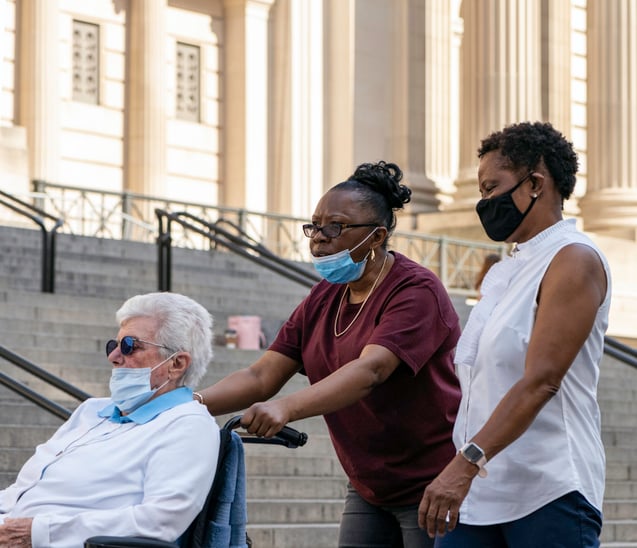

How to Recognize Age Discrimination in the Hiring Process

 The number of working seniors age 65 and older is predicted to rise from 19% to approximately 29% by 2060 as the baby boomers age. This demographic shift means that combatting age discrimination in the hiring process will become more and more pressing. In a series of studies in 2017, 40,000 fictitious applications were sent to 13,000 low-skilled jobs like retail sales workers, janitors, and administrators. On average, applicants over 65 years old received fewer callbacks than younger workers. Older female workers experienced even more age discrimination than their male counterparts as they were called back 30-47% less. These statistics show that age bias in the hiring process is a prevalent force which can leave workers in their 40s, 50s, and 60s without a job for many years. In fact, more than 50% of American workers over 50 lose long-held jobs before they planned to retire.
The number of working seniors age 65 and older is predicted to rise from 19% to approximately 29% by 2060 as the baby boomers age. This demographic shift means that combatting age discrimination in the hiring process will become more and more pressing. In a series of studies in 2017, 40,000 fictitious applications were sent to 13,000 low-skilled jobs like retail sales workers, janitors, and administrators. On average, applicants over 65 years old received fewer callbacks than younger workers. Older female workers experienced even more age discrimination than their male counterparts as they were called back 30-47% less. These statistics show that age bias in the hiring process is a prevalent force which can leave workers in their 40s, 50s, and 60s without a job for many years. In fact, more than 50% of American workers over 50 lose long-held jobs before they planned to retire.
Age Discrimination in Hiring Practices
Age discrimination in the hiring process occurs in a number of subtle ways. For example, employers can target applicants by their ages on recruiting websites like LinkedIn and Indeed. Facebook can also deliver ads to users based on their zip code, age, or gender. Additionally, many companies only advertise entry-level positions at career fairs for college seniors. The accounting firm, PwC, was accused of using this practice to maintain a youthful culture. Other organizations require applicants to have completed college programs that were recently established to weed out older individuals. They may also unintentionally or intentionally list youthful characteristics like tech savviness, adaptability, recent graduate, less-experienced, and energetic in their job requirements. Unfortunately, it is very difficult to prove these examples of age bias in a court of law due to their discrete nature.
How Can You Fight Age Discrimination?
The Age and Discrimination in Employment Act makes it illegal to “fail or refuse to hire or to discharge any individual … because of such individual’s age.” In order to substantiate an age discrimination claim, one of three things must be proven: direct evidence, disparate treatment, or disparate impact. Direct evidence of age bias is when an interviewer directly asks you your age, graduation year, or when you plan to retire during an initial screening. This includes comments like “you’re too experienced” or “we’re looking for fresh employees.” Disparate treatment is when you can prove that a company hired a younger worker who has less experience and academic credentials than you. Finally, disparate impact is when job requirements that are irrelevant to the function of a position filter out older applicants. An example of this would be if a company required candidates to have 20-20 vision without glasses to apply for an administrative assistant position.
Seek Legal Assistance Today
If you have experienced age discrimination throughout the hiring process, the Working Solutions Law Firm, located in New York City, can assist you. Contact us today at (646) 430-7930 to schedule a free case evaluation and receive experienced legal counsel.


